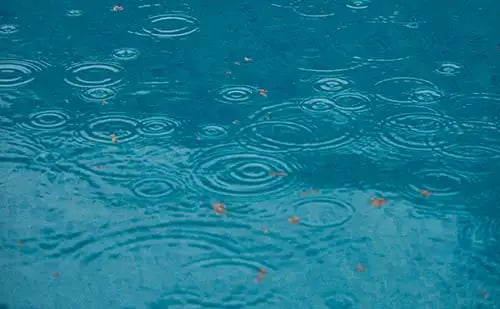
Rain can be a cause of concern for many reasons -- it makes driving more difficult, can cause leaks in your house, etc. -- but for small business owners, it can be even worse. Worries about decreased foot traffic or leaks at your store can keep you up through the night. If your business makes use of an awning and you don’t know whether or not it’s waterproof, that can be another source of concern.
Leakage
One sure sign that your awning is less than waterproof is if you’ve had any amount of leakage. Waterproof awnings do not leak, so the only water flow should be from the sides. If the material absorbs water and therefore feels wet to the touch when it’s exposed to water, it’s definitely not waterproof, and isn’t even water resistant. If the water forms beads but then absorbs eventually or if you can see holes (no matter how small) at the seams of the fabric, the material is probably water resistant but not waterproof.
If you’re encountering leakage problems of any sort, it’s probably time to go ahead and start looking in earnest for a new awning, because it’s unfortunately only going to get worse. If you determine that your awning is water resistant, knowing that means it will likely start leaking eventually, you may want to begin the initial research process but not rush into a purchase.
Other signs of damage
Leakage isn’t the only problem that comes from a less-than-waterproof canopy. Unsightly problems like mildew and water stains can occur even without major leaks, and both can be very off-putting for customers and clients, especially if they are located on a more visible part of the awning. If things like mildew or water stains have started to appear, the awning definitely isn’t waterproof and isn’t doing a good job of resisting water either. In that case, leakage is probably right around the corner.
In the meantime, doing your best to ensure the awning stays clean will help keep the unsightliness at bay. This requires some diligence and creativity, but it will buy you a bit of time to determine what you want in an awning so your next purchase can be a good one that will last a long time.
Fabric
If you haven’t seen any signs of damage yet, that’s great, but it still doesn’t necessarily mean your awning is waterproof. The main way you can know for sure is the fabric. If you bought the awning yourself or have some other way to figure out what the fabric is, then you know all you need to know. Unfortunately, natural fabrics like cotton are incapable of being waterproof. People may choose to use cotton for an outdoor awning and coat it with waterproofing material, but it’s not going to be very effective and won’t last very long.
Even most synthetic fabrics won’t really work for waterproofing. As long as it’s a woven fabric that was not created specifically to be waterproof, the waterproof coating will eventually wear off and you will start to encounter leakage and staining. Don’t lose hope, though. There is fabric out there that was made to be waterproof and therefore provides ultimate water protection.
Herculite’s vinyl-based polyester composite synthetic fibers are an example of this. Water can not get through this fabric, and because it’s not woven, there are no holes in the seams for water to slip through either.
Thinking about buying a new awning or canopy? Download our “Five Factors to Consider When Determining Awning Fabric Quality” Guide before making your new purchase.
